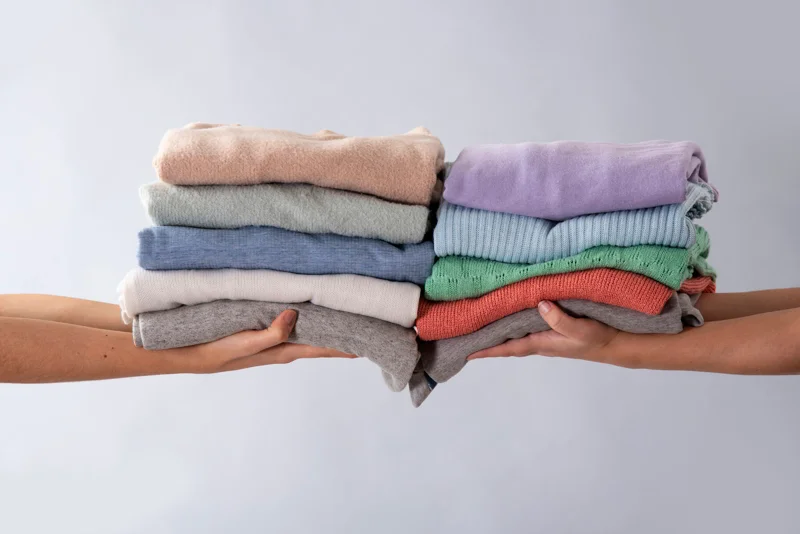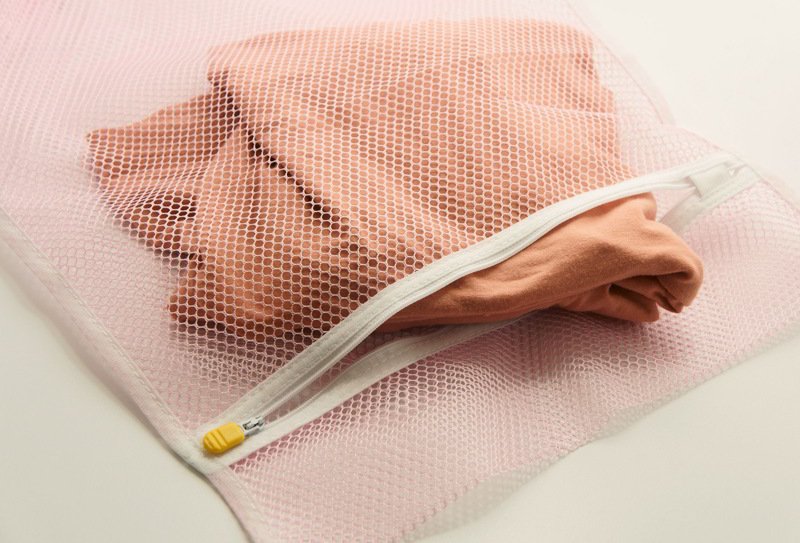Sorting Laundry: Essential Guide to Preserve Clothes
Sorting laundry often feels like an unnecessary chore, adding extra steps to an already demanding task. However, neglecting this process can lead to unfortunate outcomes like faded garments, color bleeding (dye from one item transferring to another), and even fabric damage.
Proper sorting is a fundamental aspect of garment care, essential for maintaining the quality and appearance of clothing. This guide offers clear, actionable steps derived from extensive garment care experience, designed to build confidence in your laundry routine.
Whether you’re managing household laundry or a small business owner seeking to preserve the value of clothing inventory, understanding effective sorting techniques is crucial. By implementing these methods, you can significantly extend the lifespan of garments, keep colors vibrant, maintain fabric integrity, and ultimately protect your clothing investment from common laundry mishaps.
1. Why sorting laundry isn’t just optional
Skipping the sorting step might save a few minutes initially, but the long-term consequences can be costly and frustrating. The most immediate risk is dye transfer – the classic example being a red sock turning a load of white shirts pink.
Beyond color bleeding, improper sorting causes physical damage. Rougher fabrics like denim can abrade softer materials, leading to pilling (small balls of fiber forming on the surface) on sweaters or snagging delicate items like silk or lace.
Furthermore, washing heavily soiled items with lightly soiled ones can prevent either group from getting optimally clean. Dirt and grime dislodged from dirty clothes can redeposit onto cleaner garments, resulting in a dingy appearance over time and potentially shortening the fabric’s lifespan.
Conversely, proper sorting ensures garments receive the appropriate cleaning action, maintains color vibrancy, preserves the original texture and feel of fabrics, and significantly extends the life of your clothes. For businesses, this translates directly to maintaining inventory quality and value.

2. Unlock the code: Understanding laundry care labels before you sort
Before any sorting begins, consulting the garment’s care label is the non-negotiable first step. This label contains the manufacturer’s direct instructions for optimal care. For sorting purposes, pay close attention to:
- Water temperature: Crucial for preventing color bleeding (especially in hot water) and protecting certain fabrics (like wool or delicates) that can shrink or warp in heat.
- Wash cycle: Indicates the level of agitation the garment can withstand. Sorting ensures delicates aren’t subjected to a harsh cycle meant for sturdy fabrics.
- Fabric content: Knowing if an item is cotton, wool, silk, polyester, or a blend is fundamental for grouping items with similar care needs.
- Bleach instructions: A triangle symbol indicates bleach tolerance. Never mix bleachable items with non-bleachable ones or colored fabrics to avoid damage and discoloration.
Understanding these symbols dictates sorting decisions. For instance, an item requiring cold water and a gentle cycle shouldn’t be washed with sturdy cottons in hot water on a normal cycle. If a label is missing or unreadable, err on the side of caution: sort the item with delicates, use a cold water wash, and select a gentle cycle.
3. The core sorting strategy: Color, fabric, and soil level explained
Mastering laundry sorting primarily involves understanding three fundamental pillars: the color of the garments, their fabric type and weight, and their level of dirtiness (soil level). By effectively separating laundry based on these three aspects, you address the vast majority of potential laundry issues and ensure each item receives appropriate care.
3.1 Sorting by color: Keeping whites white and colors bright
The main objective when sorting by color is to prevent dyes from transferring between garments during the wash. Create distinct piles for each color group:
- Whites: Contains only pure white items. Washing these separately helps maintain their brightness and prevents discoloration from other colors.
- Lights: Includes pastel shades, light grays, beige, and white items with minimal print or color trim. These have a lower risk of bleeding dye but can pick up color from darker items.
- Darks: Consists of black, navy, dark gray, deep brown, forest green, and similar deep tones. Washing these in cool water helps minimize fading.
- Brights: Features saturated colors like reds, bright blues, greens, oranges, and yellows. These garments pose the highest risk of bleeding dye, especially when new. Wash them separately for the first few washes, always using cold water.
- Patterned/multicolor: For items with multiple colors (stripes, prints), sort based on the dominant color. If there’s a high contrast between light and dark colors within the pattern, or if the item is new, consider washing it alone or with similar items initially to assess dye stability.

3.2 Sorting by fabric type & weight: Protecting every fiber
Separating laundry by fabric type and weight prevents physical damage caused by friction between items and ensures garments receive the correct washing action and cycle duration. Group items as follows:
- Everyday fabrics: Includes cottons, linens, and durable synthetics (like polyester or nylon blends often found in t-shirts, casual shirts, and basic trousers). These typically handle normal wash cycles well.
- Heavy-duty items: Encompasses denim, canvas, corduroy, and workwear. These sturdy items can damage lighter fabrics through abrasion. Crucially, wash towels separately. Towels produce significant lint, which can cling to other fabrics, and their absorbency requires specific washing and drying considerations.
- Delicates: Covers items made from silk, lace, sheer fabrics, rayon, and some fine knits or cashmere blends. These require gentle handling. Use mesh laundry bags for protection, select a delicate or hand-wash cycle, and always use cold water.
- Performance/activewear: Typically made from synthetic materials designed to wick moisture. Wash these separately in cold water on a gentle cycle. Avoid fabric softener, which can clog the fibers and reduce wicking properties. These fabrics are also prone to retaining odors and pilling if washed with abrasive items.
- Woolens: Includes items made from wool, cashmere, alpaca, and similar animal fibers. These require specific care: use a designated wool cycle or hand wash, always use cold water, employ a wool-specific detergent, and lay flat to dry to prevent stretching or shrinking.
- Blends: When dealing with blended fabrics, follow the care instructions suitable for the most sensitive fiber in the blend. For example, a cotton-silk blend should be treated as a delicate.
3.3 Sorting by soil level: Tackling dirt effectively
Sorting by how dirty clothes are ensures heavily soiled items receive sufficient cleaning without over-washing cleaner garments or transferring excessive dirt. This also allows for targeted stain pre-treatment. Define the levels:
- Lightly soiled: Items worn briefly, with no visible stains or heavy odors. These may be suitable for shorter or eco-friendly wash cycles.
- Moderately soiled: Represents typical daily wear with average dirt and body oils. Most everyday laundry falls into this category.
- Heavily soiled/stained: Includes clothes with visible dirt, mud, grease, grass stains, or other significant marks. These items should always be set aside for pre-treatment (applying a stain remover directly to the affected area before washing). Wash heavily soiled items separately from lightly soiled ones to prevent dirt redistribution and ensure thorough cleaning.

4. Special considerations: Laundry items that need unique handling
Some common laundry items require specific handling beyond the basic color, fabric, and soil level sorting:
- Towels: Wash towels separately from clothing. They produce substantial lint that transfers easily and can diminish the absorbency of other fabrics. Avoid fabric softener, which can coat fibers and reduce absorbency.
- Bedding: Sheets and duvet covers are bulky. Wash them separately from other items to ensure they have enough room to move freely in the machine for proper cleaning and rinsing. Do not overload the washer.
- Athletic wear: Prone to bacteria buildup and odor retention. Wash separately using cold water and avoid fabric softeners. The specialized synthetic fabrics require gentle handling to maintain performance features.
- Items with hardware/Velcro/embellishments: Zippers, hooks, Velcro closures, beads, or sequins can snag or damage other items in the wash. Fasten all closures, turn garments inside out, and consider placing them in a mesh laundry bag for extra protection.
- New clothes: Especially dark or brightly colored ones, are prone to dye bleeding. Wash new garments separately for the first few times, using cold water, to prevent dye transfer to other items.
- Stained garments: Isolate heavily stained items immediately. Pre-treat stains before putting the garment in the washing machine, as washing (and especially drying) can set the stain permanently. Check the stained area after washing but before drying to ensure the stain is removed; if not, repeat pre-treatment and washing.
5. Streamlining your sort: Practical tips for laundry day
Incorporating a few simple habits can make the sorting process quicker and more effective:
- Pre-sort system: Use a hamper with multiple compartments (e.g., whites, colors, delicates). Sorting clothes as you discard them saves significant time on laundry day.
- Turn inside out: Turn dark-colored clothes, printed t-shirts, and items prone to pilling (like sweaters) inside out before washing. This protects the outer surface from abrasion and fading, and helps clean areas with more body soil more effectively.
- Mesh bags are essential: Utilize mesh laundry bags for delicates (like lingerie, hosiery), small items (like socks or baby clothes that can get lost), and items with straps or ties that could tangle.
- “When in doubt” rule: If unsure about how to wash an item (due to missing labels or complex construction), always default to the most cautious approach: wash it separately or with delicates, use cold water, and select a gentle cycle.
- Proper load size: Avoid overloading the washing machine. Clothes need room to circulate freely in the water for effective cleaning and rinsing. Overloading can lead to poor cleaning results and increased wear on fabrics.

6. Related questions
6.1 Can I wash whites and light colors together?
While sometimes possible with older, colorfast light items in cold water, washing pure whites separately is the best practice to maintain their brightness. Light colors (pastels, light grays) can sometimes carry trace amounts of dye or pick up dinginess that subtly dulls whites over time. If combining, ensure the light items are truly light and have been washed many times before without bleeding.
6.2 Why should towels always be washed separately?
Towels should be washed alone primarily due to lint production. They shed significant amounts of lint, especially when new, which can cling stubbornly to other fabrics like corduroy or synthetic activewear. Additionally, towels are highly absorbent and require thorough rinsing; washing them separately ensures they get clean without residue buildup, and prevents them from absorbing excessive water needed by other items in a mixed load. Avoid fabric softener as it reduces their absorbency.
6.3 How do I sort clothes with multiple colors, like stripes or prints?
For garments with multiple colors, the general rule is to sort based on the dominant color. If the item is predominantly light with dark stripes, sort it with lights. If predominantly dark with light accents, sort with darks. However, if the colors are high-contrast (e.g., black and white) or the item is new, there’s a higher risk of dye bleeding. In these cases, it’s safest to wash the item separately for the first few times or with other similarly patterned items, always using cold water.
6.4 Do modern detergents mean I don’t need to sort as carefully?
While modern detergents are more advanced and often include ingredients to help suspend dirt or capture loose dyes (“color catchers”), they are not foolproof substitutes for proper sorting. Significant dye bleeding from new or unstable dark/bright garments can still overwhelm these features and discolor lighter items.
Furthermore, detergents cannot prevent physical damage caused by washing incompatible fabric types together (abrasion, pilling, snagging) or issues arising from different soil levels. Sorting remains essential for optimal garment care, longevity, and appearance, even with advanced detergents.
Read more:
Properly sorting laundry is a cornerstone of effective garment care. While potentially adding a few minutes to the laundry process, the benefits far outweigh the time investment. Consistent sorting protects clothes from dye transfer, prevents physical damage like pilling and snagging, ensures thorough cleaning, and ultimately extends the lifespan and preserves the appearance of garments.
Mastering these simple sorting principles empowers you to maintain the quality and value of clothing, whether for personal use or for a business managing inventory. Applying these steps consistently transforms laundry from a potentially damaging chore into a proactive step for garment preservation.
For businesses needing specific advice on care instructions for labels or developing packaging solutions that communicate proper garment care, Packlove offers expert consultation tailored to your needs.






















